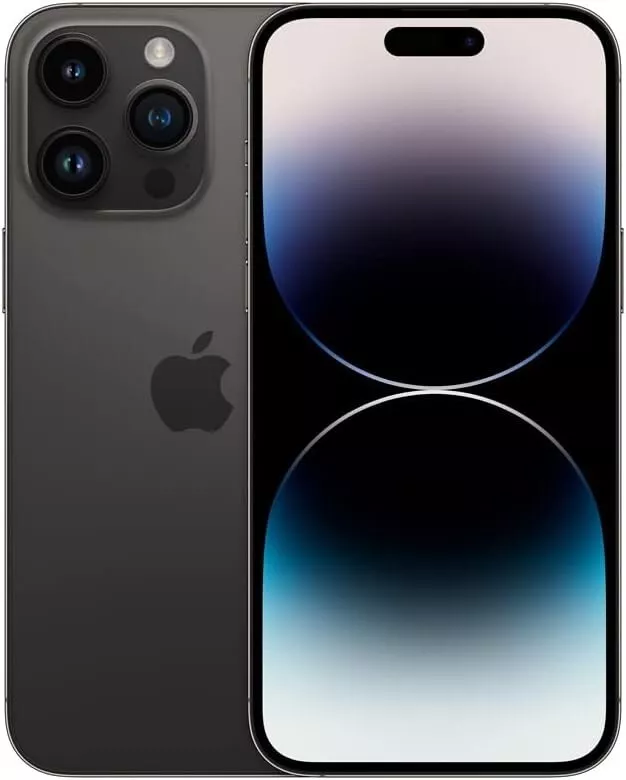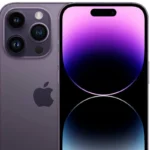The iPhone 14 Pro marked a significant design shift for Apple’s smartphone lineup with the introduction of what has come to be known as the “pill notch” or Dynamic Island. This feature replaced the larger notch that dominated the top of previous iPhone screens since the iPhone X. The pill-shaped notch is more than just a design choice; it signifies the integration of various sensors and the front camera into a smaller, less obtrusive cutout, thereby providing users with more screen real estate.
Apple’s design philosophy seems to focus on merging utility with aesthetics, and the Dynamic Island is a prime example of this. It dynamically changes size and shape to accommodate different types of alerts and functionalities, from showing incoming calls to acting as a shortcut for live activities like music or timers. It represents a new way of interacting with the iPhone, moving away from static hardware elements and towards a more fluid, software-integrated experience.
Embrace the Island: A Closer Look at the iPhone Dynamic Island
Apple’s Dynamic Island, the pill-shaped cutout housing the front-facing camera and Face ID sensors, has stirred up plenty of conversation since its introduction. Whether you love it or hate it, there’s no denying its ingenuity and potential.
What Exactly Is the Dynamic Island?
It’s more than just a hole in the screen. Apple combined hardware and clever software to turn this pill shape into an interactive area. It expands and morphs to display alerts, notifications, music controls, timers, and more. It’s designed to make multitasking smoother and accessing information faster.
A New Way to Interact with Your iPhone
The Dynamic Island isn’t static. It adapts to what you’re doing:
- Alerts and Notifications: Incoming calls, alarms, low battery warnings – they all appear in the Dynamic Island, subtly grabbing your attention.
- Ongoing Activities: See timers, music controls, turn-by-turn navigation, and more without leaving your current app.
- Live Activities: Keep tabs on sports scores, ride-sharing updates, or food delivery progress directly in the Dynamic Island.
A Divisive Design Choice
| The Pros | The Cons |
|---|---|
| Creative use of screen space | Some find it distracting or visually unappealing |
| Streamlines multitasking | Not all apps fully utilize its potential yet |
| Adds a fun and unique element to the iPhone experience | Might be initially confusing for some users |
Getting Used to the Island
Love it or loathe it, the Dynamic Island is here to stay (for now). Here’s how to make the most of it:
- Explore its features: Tap, long-press, or swipe on the island to discover its various functions.
- Customize Live Activities: Choose which apps you want to see updates for in the Dynamic Island.
- Embrace the change: Give yourself time to adjust. Many users have grown to appreciate the convenience and ingenuity of the design.
Key Takeaways
- Apple introduced the pill-shaped Dynamic Island with the iPhone 14 Pro.
- This feature houses essential sensors and the front camera in a compact space.
- Dynamic Island enhances user interaction by integrating with live activities.
Evolution of the iPhone Notch
The iPhone notch has been a distinct aspect of its design, evolving steadily over the years. This section traces the transformation of the notch from its inception in the iPhone X to its latest iteration in the iPhone 14 Pro.
From iPhone X to iPhone 13
The notch first appeared on the iPhone X, released in November 2017. It marked a significant design change, representing a departure from the large bezels of prior models. The notch housed the front-facing camera and the new Face ID technology. This design remained consistent through subsequent iPhone generations, including the iPhone 13 and iPhone 13 Pro. Each model embodied incremental improvements in screen technology and facial recognition capabilities.
Introduction of the Pill-Shaped Notch in iPhone 14 Pro
In 2022, Apple introduced the iPhone 14 Pro with a bold design overhaul. This model featured a pill-shaped notch, a shift from the traditional rectangular notch. The pill-shaped notch, also called the “Dynamic Island”, houses the front camera and Face ID sensors, integrating them with the display more seamlessly than ever before. This development raised expectations for future iPhones to further refine and possibly minimize the notch design.
Technology and Features
The iPhone 14 Pro and iPhone 14 Pro Max bring a new design to the front-facing camera and sensor array. This design change introduces the Dynamic Island, which enhances interaction with the device and improves camera and sensor capabilities.
Dynamic Island Functionality
Dynamic Island transforms the pill-shaped cutout into an active area for alerts and activities. On the iPhone 14 Pro models, the software in iOS 16 and iOS 17.5 complements the hardware, allowing the Dynamic Island to change size and shape. It shows notifications, privacy indicators, and live activities like music, timers, and more.
Impact on User Interface and Notifications
The interface interacts with Dynamic Island in a fluid way. It displays incoming calls and alerts without taking up the whole screen. This keeps the overall experience clean and focused. Notifications pop in and out of the Dynamic Island, making sure vital information is visible without interrupting the user’s activity on the display.
Advancements in Camera and Sensor Technology
The pill-shaped cutout not only houses the front camera but also includes enhanced Face ID sensors and mics. iPhone 14 Pro models utilize this improved layout to provide secure facial recognition while offering high-quality selfies and video calls. The arrangement ensures that vital components like the camera and sensors are neatly integrated into the display, maximizing the usable screen area.







